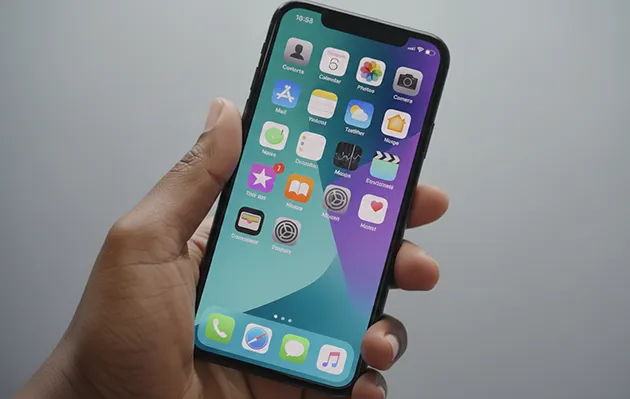$5B Smartphone Alleged Price Fixing Class Action Settlement Dismissed

Updated: November 30, 2025
$5 Billion Smartphone Class Action Dismissed - What's Next for Consumers?
The $5 Billion smartphone consumer antitrust case against Qualcomm is essentially over and closed. The trial judge entered a final judgment in Qualcomm’s favor, and the consumers appealed to the the higher Courts. That appeal has now finished, and the Court did not revive the claims. After receiving the appellate mandate, the judge went back to the small remaining issue in the case, dismissed the last leftover claim, and officially closed the case in April 2025. This means there is no active lawsuit, no certified class, and no settlement for consumers.What was the Smartphone Class Action About?
If you're one of over 300 million American consumers who use a smartphone you might be part of a pending smartphone open class action. The class action was filed against Qualcomm, an American processor chip manufacturer, which owns patents critical widely used smartphone technology, such as 5G.It is unclear at this time whether the smartphone class action also includes smartwatches such as Apple watches, Samsung Galaxy watches, Garmin watches, or Fitbits.
Latest Update
As of October 7, 2025 there is no settlement and no active claims process. The district court entered judgment for Qualcomm on October 5, 2023. Plaintiffs appealed. On February 25, 2025, the Ninth Circuit largely affirmed the district court’s dismissal and summary judgment rulings. On April 9, 2025, the district court dismissed the remaining UCL unfairness claim. You can still register for case updates on the official notice site here.Does This Include Android Phones?
Yes. Many Android devices use Qualcomm chipsets, and those purchases could be part of the case if a class is certified. This includes phones made by Samsung, LG, Motorola, and other manufacturers that relied on Qualcomm’s technology.How Much Could Consumers Receive?
No payout amount has been determined. Plaintiffs estimate that consumers collectively overpaid more than $5 billion for smartphones. If a settlement or judgment is reached, payments would depend on how many valid claims are filed and the total settlement fund approved by the court.Can I Still Join the Smartphone Class Action?
Yes. While there is no active claim form, consumers can register on the official case website to receive future updates. Registration ensures you will be notified if a settlement or new claims process opens.Do I Need to Keep Old Phone Receipts or Serial Numbers?
It’s a good idea to keep any proof of purchase, carrier bills, or device serial numbers for smartphones bought after February 11, 2011. These records could help verify eligibility if a claims process becomes available later.Is There a Deadline to Register for Updates?
No specific deadline exists right now. Since the class is not certified and no claims are open, registration remains available on the official notice site to ensure you receive future updates.Who Is Handling the Qualcomm Smartphone Lawsuit?
The case is being managed by plaintiffs’ class counsel and is consolidated in the U.S. District Court for the Northern District of California under Judge Jacqueline Scott Corley. The case name is In re Qualcomm Antitrust Litigation, No. 3:17-md-02773-JSC.What Happens Next in the Qualcomm Case?
The Ninth Circuit Court of Appeals largely upheld earlier dismissals, and the district court has since ruled on remaining claims. Plaintiffs may pursue additional appeals or settlement negotiations. Consumers can continue to register for updates as the legal process develops.What Is the Difference Between the FTC Qualcomm Case and This One?
The FTC case was brought by the Federal Trade Commission over similar antitrust concerns but focused on regulatory violations, not direct consumer damages. The current smartphone class action seeks monetary compensation for consumers who allegedly overpaid for their devices.How Do I File a Claim?
There is no claim form at this time. You can register to receive future notices and case updates from the official notice website here. If a class is certified again or a settlement is announced later, the notice site will provide instructions.Has the Smartphone Class Action Been Dismissed?
Yes, the consumer Qualcomm smartphone class action has been dismissed for now. On February 25, 2025, the Ninth Circuit Court of Appeals largely affirmed earlier rulings in favor of Qualcomm, which had dismissed most of the plaintiffs’ claims. Then, on April 9, 2025, the district court dismissed the final remaining “UCL unfairness” claim, closing the case at the trial level.There is currently no active class, no settlement, and no open claim process. Plaintiffs may still seek further review or appeal, but as of now, the case remains dismissed. Consumers can continue to register on the official notice site to receive updates if new proceedings or settlements are announced in the future.
What Is the UCL Unfairness Claim?
The “UCL” stands for California’s Unfair Competition Law. It allows consumers to challenge business practices that are deceptive, unlawful, or unfair — even if they don’t break a specific federal law. In this case, plaintiffs claimed that Qualcomm’s licensing and chip sales practices were “unfair” because they allegedly inflated smartphone prices for consumers.The court ultimately dismissed the UCL unfairness claim in April 2025, finding that the plaintiffs did not show enough evidence that Qualcomm’s conduct harmed consumers in a way that violated California’s competition laws.
Who would be included if a class is certified in the future?
The most recent operative complaint focused on California consumers who purchased, paid for, or reimbursed the price of UMTS, CDMA, or LTE smartphones for personal use on or after February 11, 2011. The exact definition could change if a new class is certified by the court in the future.What products are potentially involved?
Smartphones that used CDMA or LTE modem technology supplied under Qualcomm’s licensing practices. This historically included phones sold by major brands. Accessories like smartwatches are not part of the case based on current filings.Do I need proof of purchase?
Not yet. Since there is no active claims process, save any records you have for phones you purchased since February 11, 2011, such as receipts or carrier bills. If claims open later, guidance about acceptable documentation will be provided on the notice site.When will payments happen?
There is no payment timeline. Payments would only occur if plaintiffs obtain a judgment or a settlement is reached and approved by the court. That has not happened.Where can I read the court decisions?
You can read the Ninth Circuit's 2025 opinion here and view the federal docket history here. The official notice site also hosts filings and past notices here.Quick Takeaways
• No settlement and no claim form at this time.
• Register for updates on the official notice website here.
• Keep purchase records for any smartphones bought since February 11, 2011 in case claims open in the future.
The smartphone class action lawsuit was originally filed by the FTC where it claimed that Qualcomm violated state antitrust laws in the United States, harming competition and directly causing consumers to overpay for their cell phones for years, at least since 2011. The FTC claimed that the amount consumers overpaid by more than $5 Billion as a result of Qualcomm's "No License, No Chips" business practice.
Qualcomm potentially engaged in anti-competitive conduct that raised the price consumers paid for mobile phones. The cell phones involved in this litigation include phones with CDMA and LTE technologies. This includes phones manufactured and sold by all of the top smartphone manufacturers and companies such as Samsung, Apple, Huawei, LG, Motorola, and ZTE. Below is a list of the manufacturers involved in this class action lawsuit. A full list of all smartphone models included in this class action can be found on the class action administration claim form website (see at the bottom of this page).
| Smartphone Manufacturer |
|---|
| Samsung |
| Apple |
| Coolpad |
| HTC |
| Huawei |
| Kyocera |
| Lenovo |
| LG |
| Motorola |
| Microsoft |
| Nokia |
| Sony |
| TCL |
| ZTE |
| Alcatel |
| BlackBerry |
How Do I Qualify?
You may be included in this class action if you are in the United States, and you purchased or paid for a UMTS, CDMA (including cdmaOne and CDMA2000) and/or LTE smartphone for your personal use from February 11, 2011.Phones that were included as part of the purchase of a wireless network services contract are included in this class action as well as single purchases. These contracts are typically offered from some of the largest conglomerate wireless providers such as Verizon, AT&T, T-Mobile, or Sprint as part of marketing to get contract sign-ups.
How Do I Find Class Action Settlements?
Find all the latest class actions you can qualify for by getting notified of new lawsuits as soon as they are open to claims:How Do I File a Claim?
Register in this class action for potential reward online here. It is important to note that the class action lawsuit is currently pending in Court; The latest trial was ruled in Qualcomm's favor in the Ninth Circuit court. Qualcomm's due process was ruled as having been harmed due to the massive breadth and scope of the case involving almost every single cell phone purchaser in the U.S. dating back more than a decade. As a result, the trial is currently pending in lower courts.Amended Smartphone Class Action Complaint
An amended class action complaint was filed on behalf of the proposed 250 million Americans affected by the alleged price fixing of smartphones that contained Qualcomm processors. According to Reuters, the central thesis of the Qualcomm class action lawsuit is that the company violated California state law, specifically anti-trust law called the Cartwright Act. Previously, a third-judge panel of the U.S. Court of Appeals for the Ninth Circuit overturned the certification of the Qualcomm class action.The argument made by Qualcomm's lawyers, among other arguments for the defense of Qualcomm, was that the size of the class action settlement, 250 million class action members and an estimated $5 Billion in funds, is too unwieldy. The size and scope of such a class action would make this one of the single largest class action lawsuits in history.
So What's Next For the Smartphone Class Action?
The Qualcomm class action lawsuit has had its class action certification reversed by the U.S. Court of Appeals for the Ninth Circuit and is currently pending a second amended class action lawsuit, which you can find here.Filing Class Action Settlement Claims
Please note that your claim form will be rejected if you submit a settlement claim with fraudulent information. By providing this information and your sworn statement of its veracity, you agree to do so under the penalty of perjury. You would also be harming others that actually qualify for the class action settlement. If you are not sure whether or not you qualify for this class action settlement, visit the class action administrator's website below. OpenClassActions.com is a participant in the Amazon affiliate advertising program and this post may contain affiliate links, which means we may earn a commission or fees if you make a purchase via those links.Is This Smartphone Class Action Legit or a Scam?
Yes. The case is a real federal MDL in the Northern District of California. There is no payout right now. Only register on the official notice website and avoid third-party forms that ask for sensitive data or fees.Do Refurbished or Used Phones Qualify?
If a future class is certified, eligibility may include refurbished or used devices purchased for personal use during the class period. Keep proof of purchase showing model and date. Final rules would appear on the official notice site.Do Carrier Installment Plans or Leases Count?
Yes. Phones obtained through carrier financing, installment plans, leases, or upgrade programs could be included if a class is certified. Keep carrier bills or finance agreements that show the device and purchase date.What If I No Longer Have the Phone?
You may still qualify if you can document the purchase during the class period. Save receipts, carrier invoices, or account history that list the model and purchase date.What If My Employer Paid for My Phone?
Business or employer-paid purchases are often treated differently from personal purchases. If the company paid, the company could be the claimant. Keep records and watch the notice site for specific eligibility instructions.Do Gifts or Hand-Me-Down Phones Qualify?
Eligibility usually follows the purchaser who paid for the device. If you received a phone as a gift, the person who purchased it may be the eligible claimant. Save purchase documentation if available.Can I Claim for Multiple Devices?
Possibly. If a claims process opens, rules typically allow claims for each eligible device purchased during the class period, subject to documentation and anti-fraud checks.Are Prepaid or Budget Phones Included?
Many prepaid phones use Qualcomm chipsets. Inclusion would depend on the final class definition and proof that the device falls within the covered technologies and dates.Do International Purchases Qualify?
The consumer case focuses on U.S. purchases for personal use. Phones bought outside the United States are usually excluded unless the notice says otherwise.What If I Returned or Traded In My Phone?
Returns are usually not eligible. Trade-ins can still qualify for the original purchase if you can prove the initial buy within the period. Keep both the purchase and trade-in paperwork.Does Switching Carriers Affect Eligibility?
No. Eligibility is usually based on the device purchase, not which carrier you currently use. Keep the original purchase or financing records.Will This Case Lower Smartphone Prices?
There is no confirmed impact on pricing. If future relief changes licensing practices or results in monetary relief, market effects would take time and are uncertain.Will I Owe Taxes on a Payment?
Tax treatment depends on the nature of any payment. If a settlement is approved later, the notice will include guidance. Consider speaking with a tax professional for personal advice.How Are Attorney’s Fees Handled?
In class actions, attorney’s fees are typically paid from any settlement fund and must be approved by the court. Consumers do not pay out of pocket to participate.How Long Should I Keep My Records?
Keep receipts, carrier bills, or order confirmations for phones bought on or after February 11, 2011 until the case fully resolves or a claims window closes.Can I Opt Out or Object?
Those rights only apply if a settlement is proposed and approved for notice. If that happens, the official notice will list deadlines and instructions to opt out or object.What Does Class Certification Mean?
Class certification is when a court decides a case can proceed on behalf of a defined group of people with common issues. The class here is not currently certified.What Is Summary Judgment?
Summary judgment is a ruling made by the court without a trial when it finds no genuine dispute of material fact on certain claims. Key rulings favored Qualcomm, which contributed to the case being dismissed at the trial level.How Is This Different From Apple-Qualcomm Disputes?
Apple and Qualcomm settled their separate corporate litigation in 2019. That settlement did not pay consumers. The consumer case here seeks relief for people who allegedly overpaid for smartphones.How Do I Avoid Fake Claim Sites?
Use the official notice website only. Do not share Social Security numbers or pay fees to file. Look for a clear case name, court, and administrator contact on the official site.Claim Form Website: MobilePhoneClassAction.com
Sources
• Official Notice Website• Ninth Circuit Opinion (Feb 25, 2025)
• Federal Court Docket on CourtListener
• Second Amended Class Action Complaint (2022)
• Reuters Coverage of the Qualcomm Consumer Lawsuit
For more class actions keep scrolling below.

$1.9M PetSafe e-Collar Settlement
Deadline: Dec 2, 2025
Payout: $30 - $420

$5.5M Mid America Pet Food Settlementt
Deadline: February 5, 2026
Submit Claim
$30M YouTube Privacy Settlement
Deadline: January 21, 2026
Submit Claim
$4M Frozen Waffles Class Action Settlement
Deadline: Dec 16, 2025
File Claim| Settlement Summary | |
| Status | No settlement. Registration for updates only |
|---|---|
| Case | In re Qualcomm Antitrust Litigation, No. 3:17-md-02773-JSC (N.D. Cal.) |
| Class Period | Purchases on or after Feb 11, 2011 |
| Who Might Qualify | Consumers who purchased UMTS, CDMA, or LTE smartphones for personal use |
| Claim Deadline | Pending |
| Payout | Varies. None available at this time |
| Proof | Not required now. Keep purchase records |
| Payment Method | Mailed check (if a settlement opens later) |
| Official Site | MobilePhoneClassAction.com |
| Register | Register for Updates |
| Key Court Updates | District court summary judgment for Qualcomm on Sep 26, 2023. Ninth Circuit largely affirmed on Feb 25, 2025. Remaining UCL unfairness claim dismissed Apr 9, 2025. |